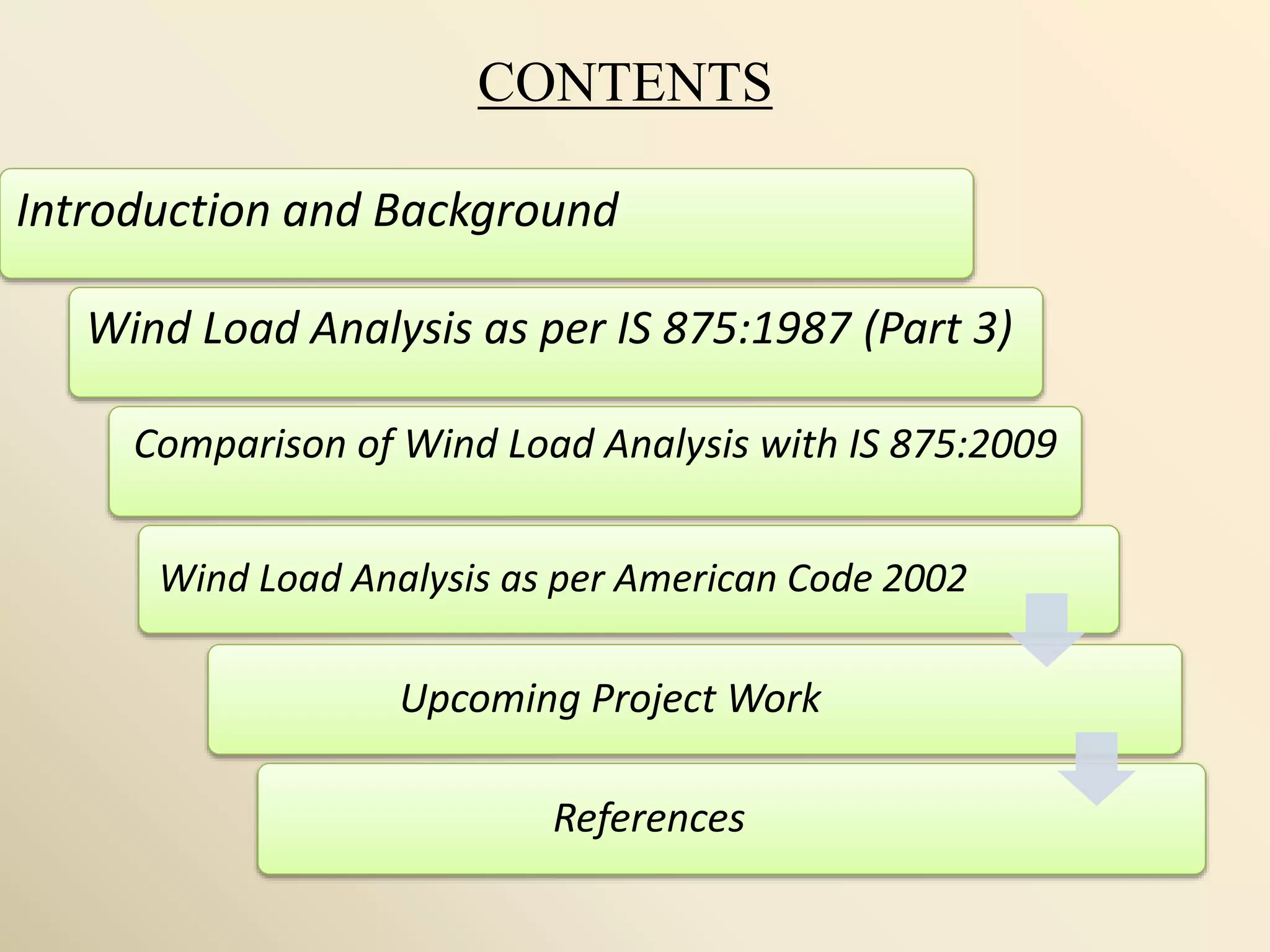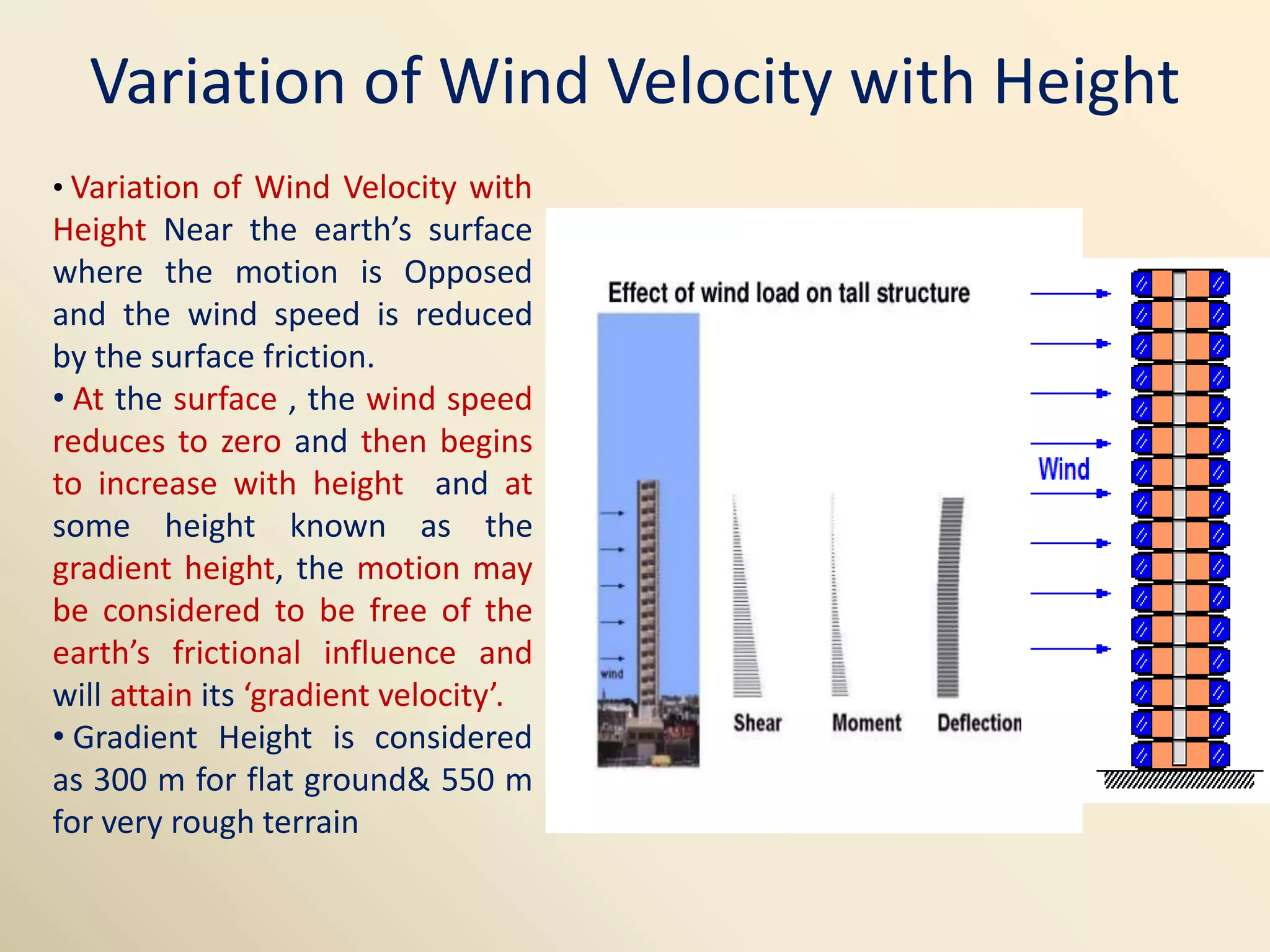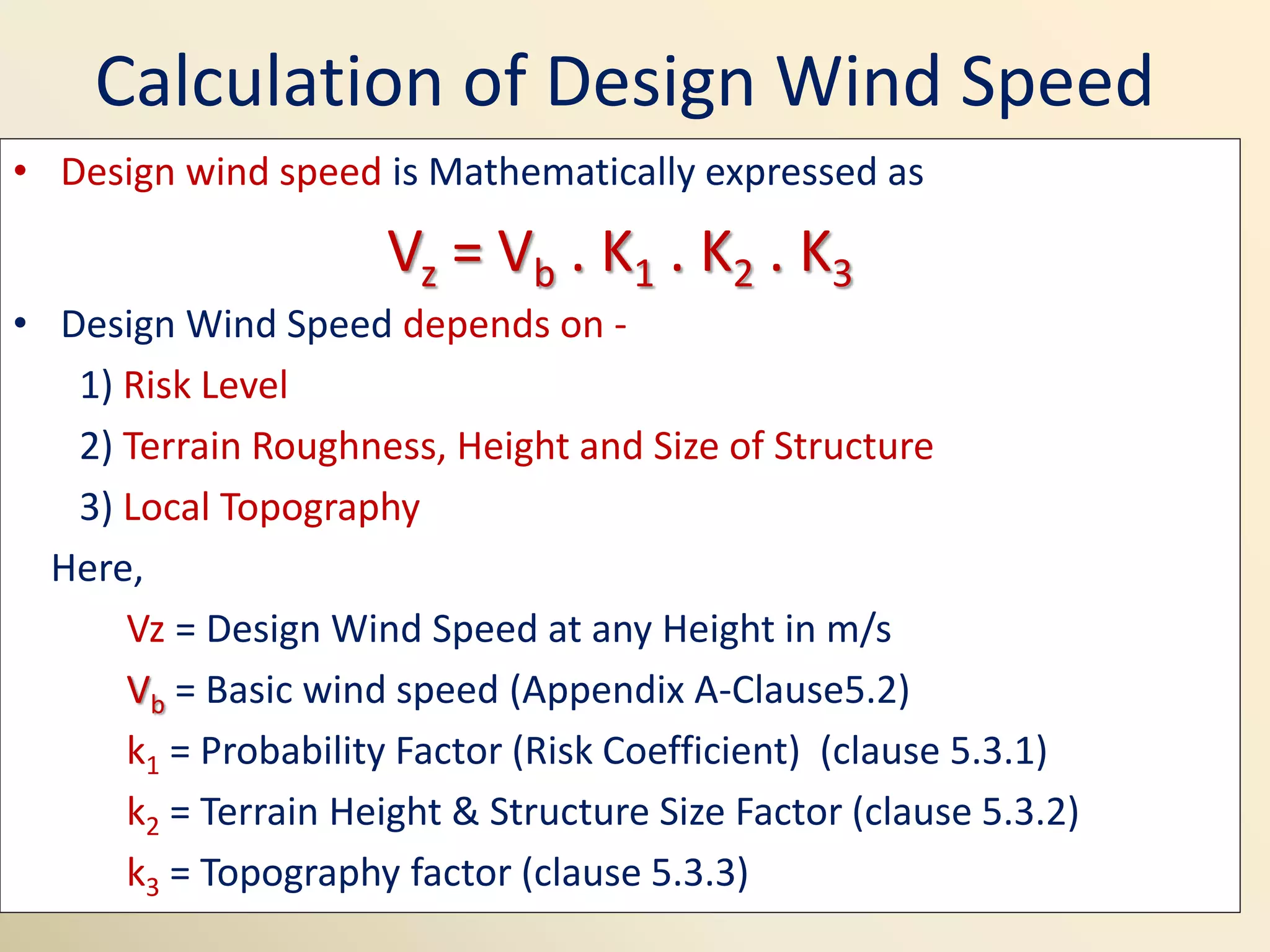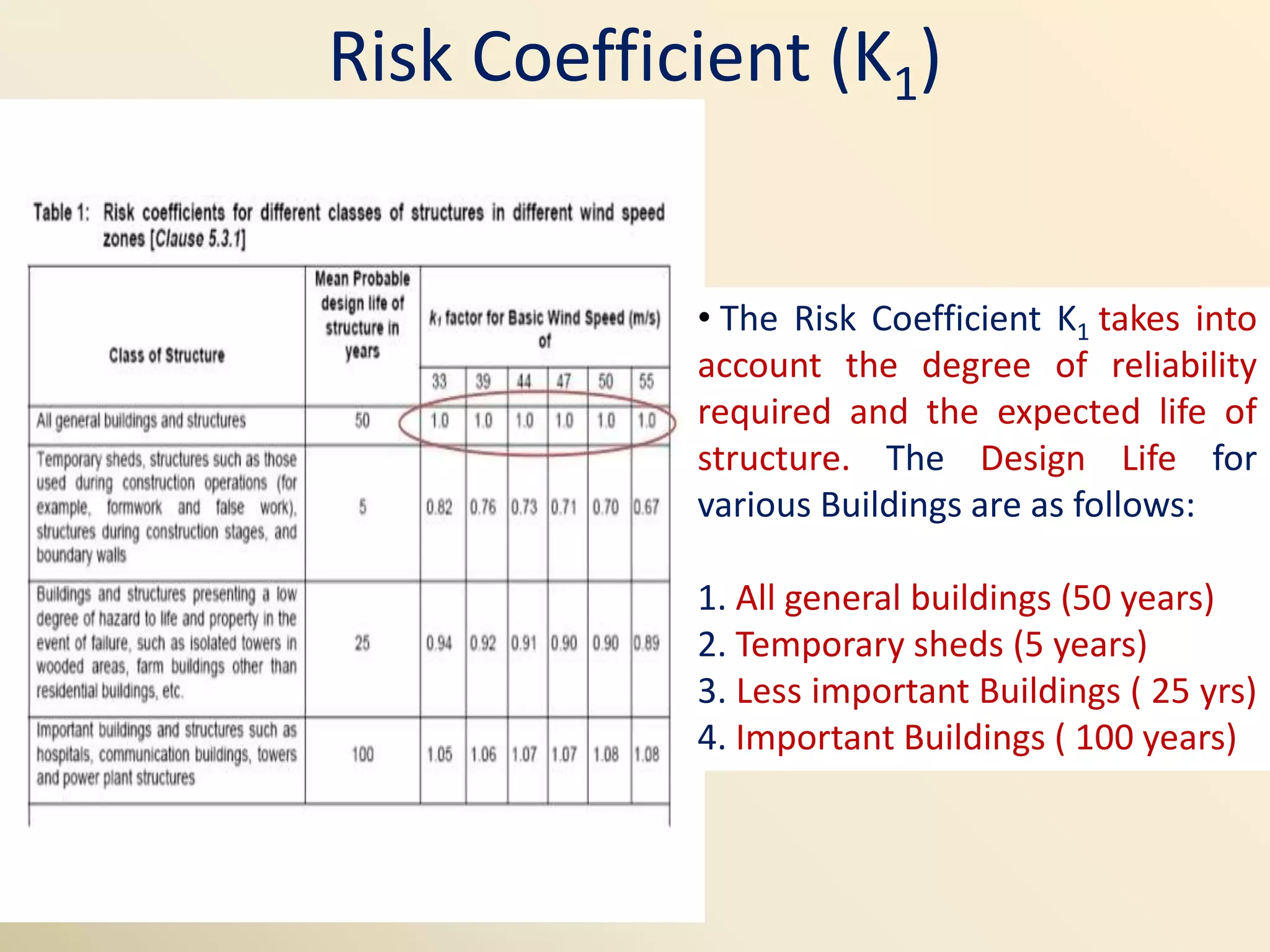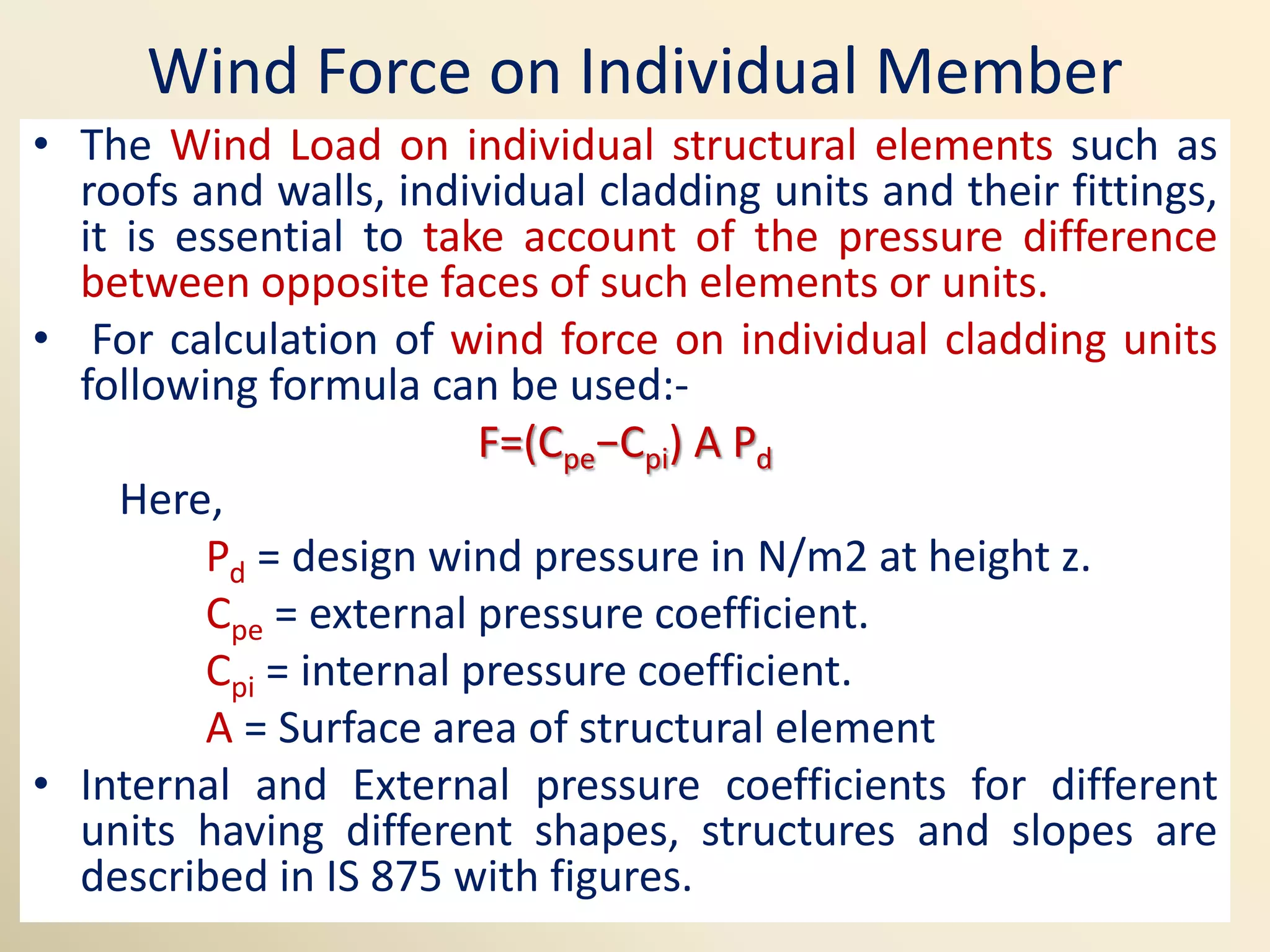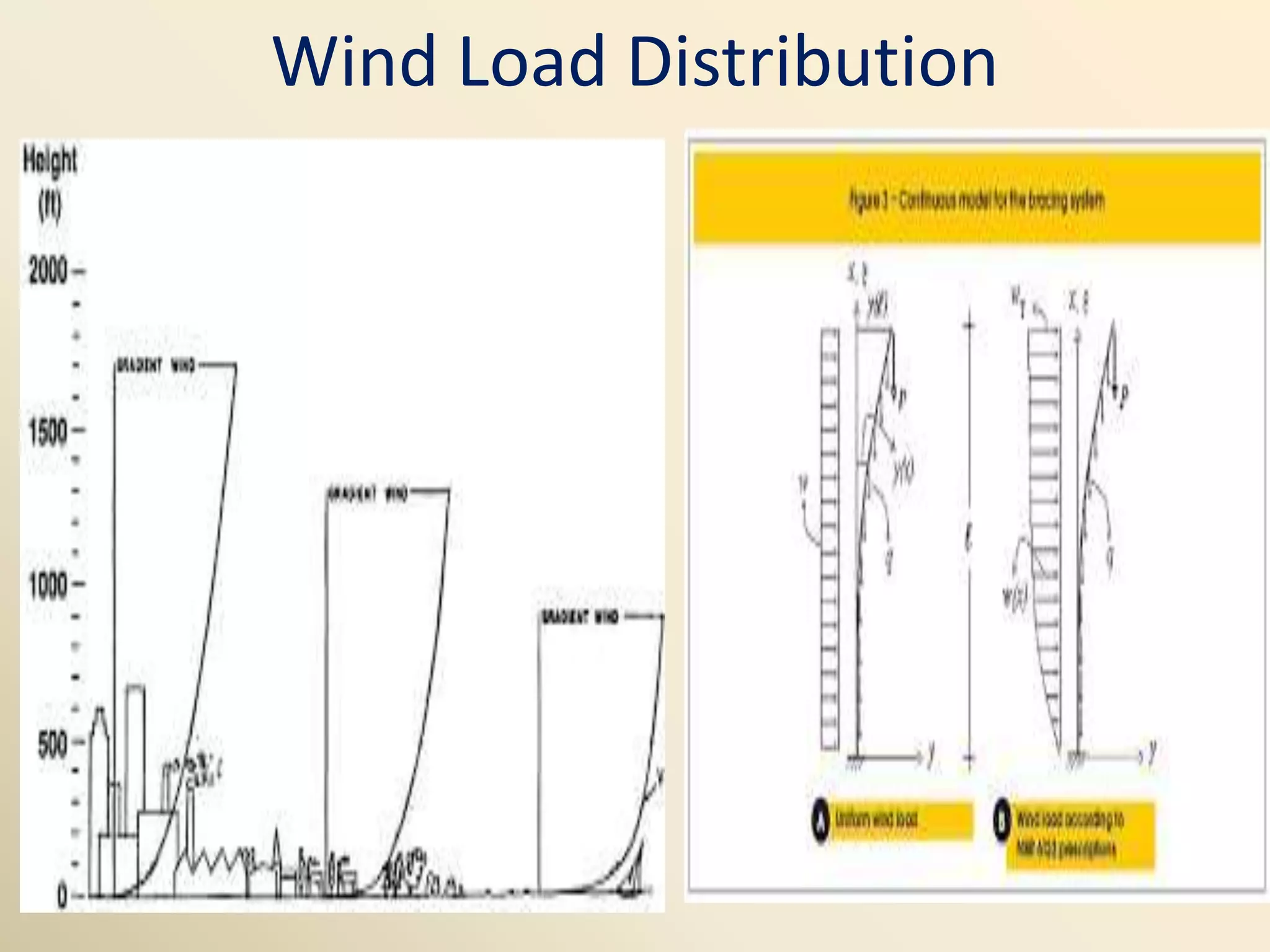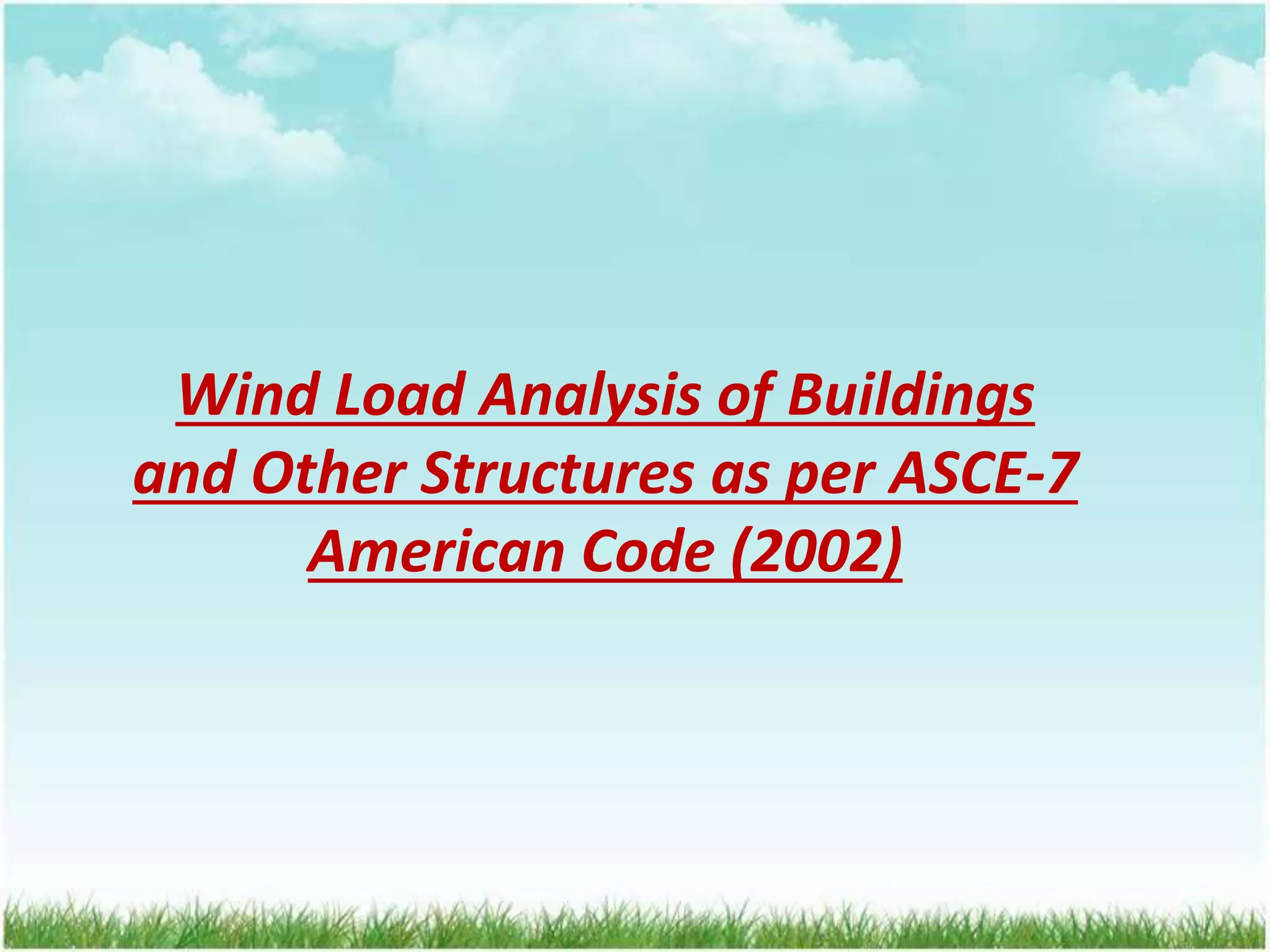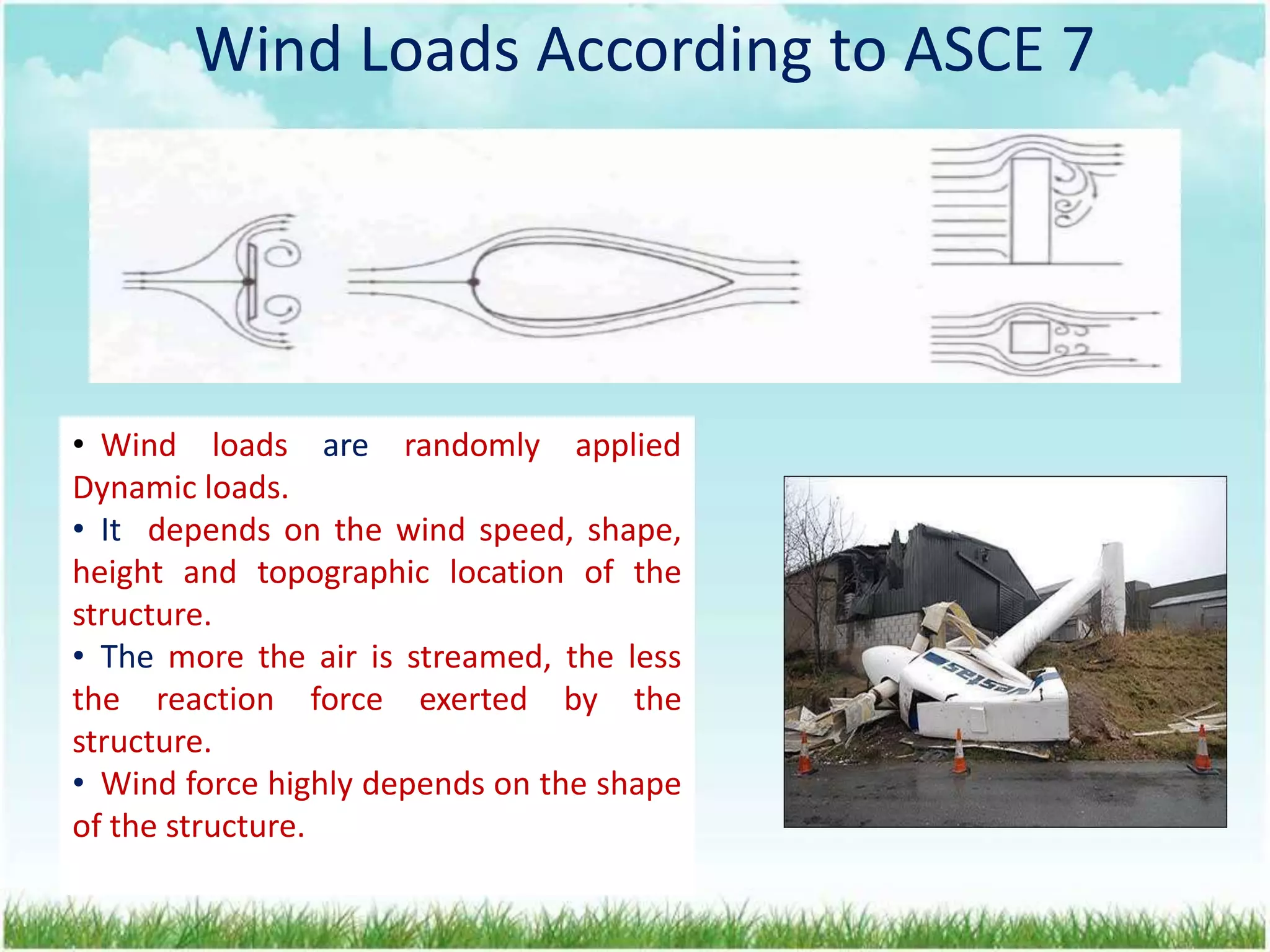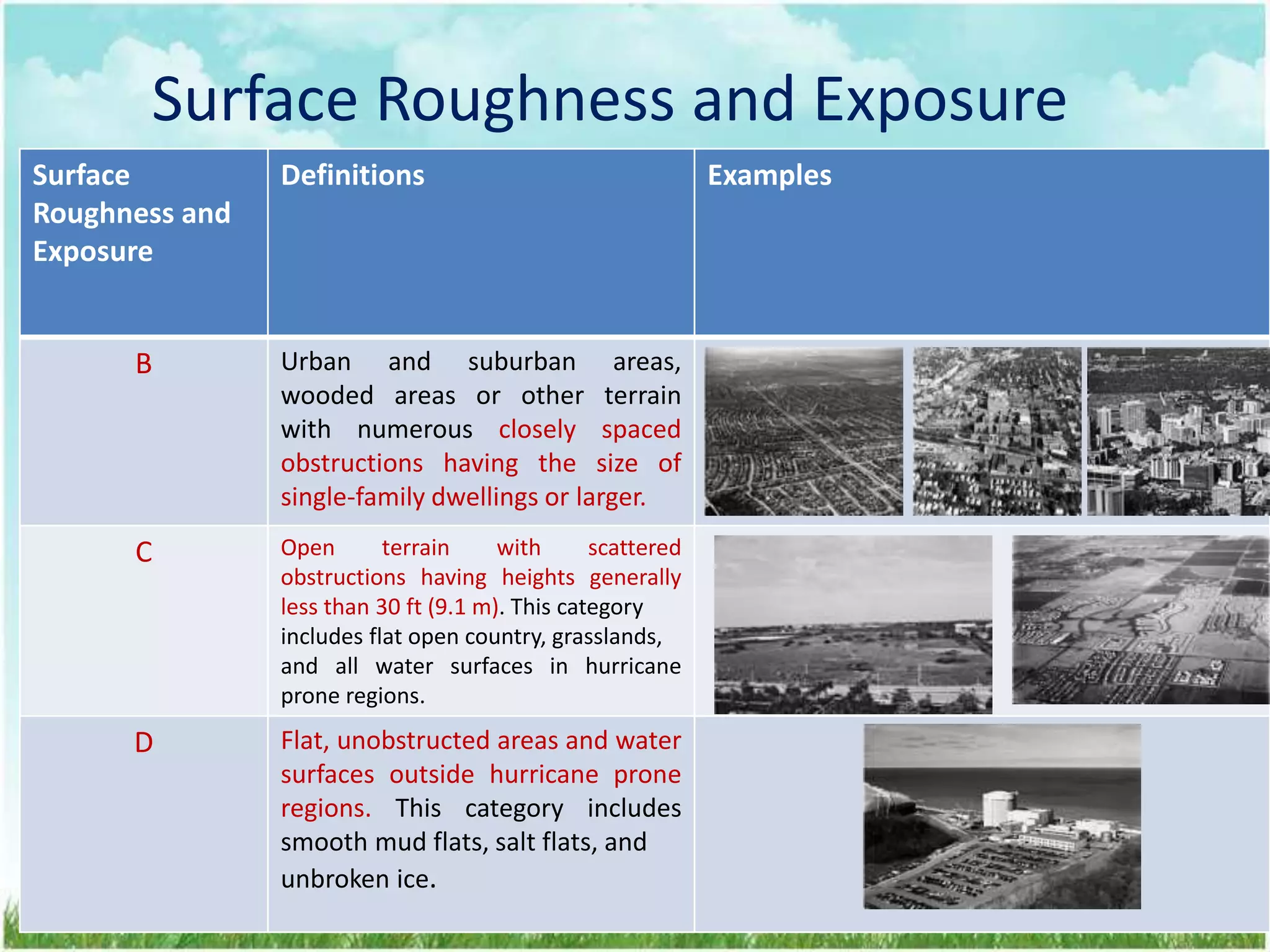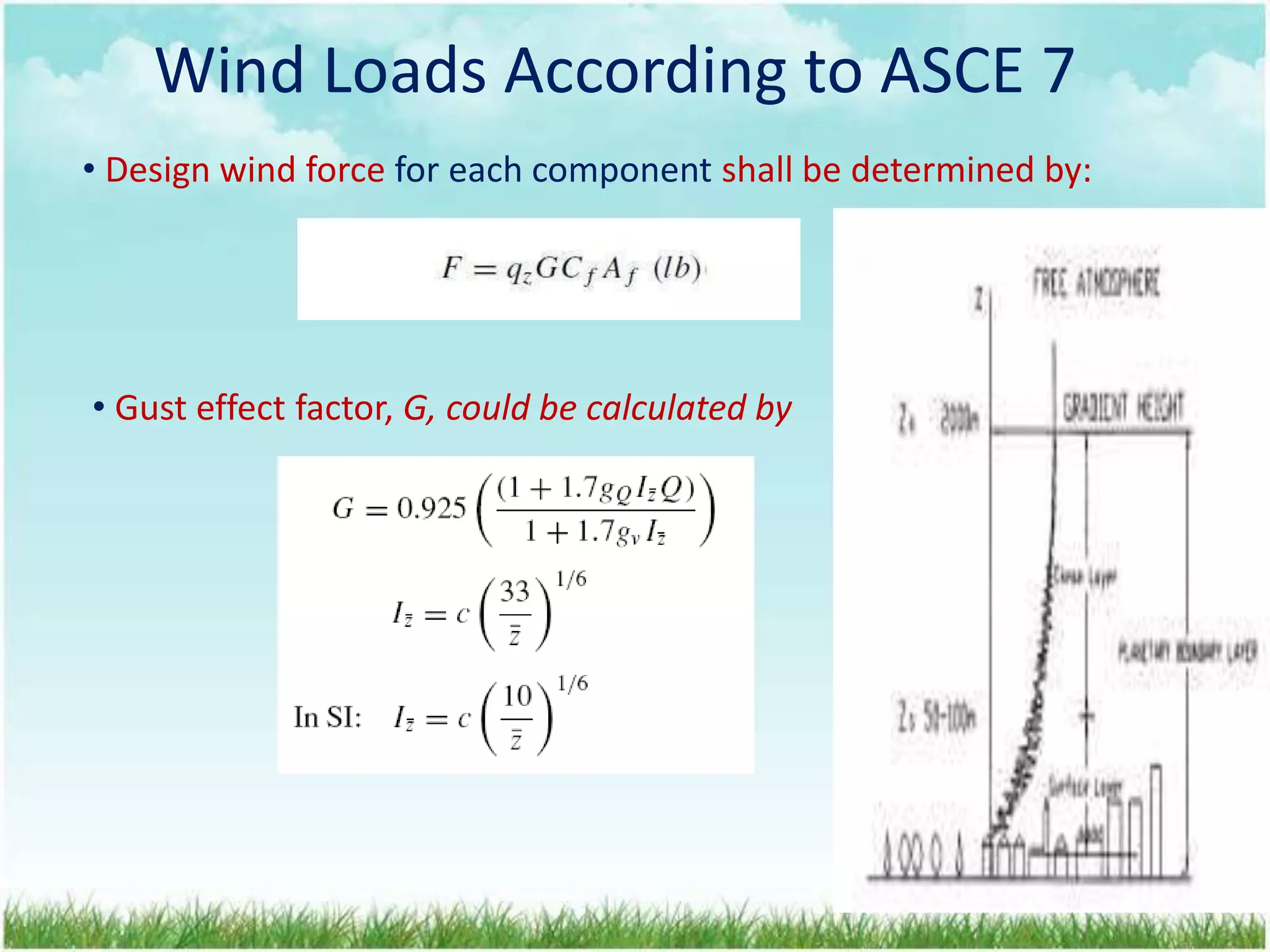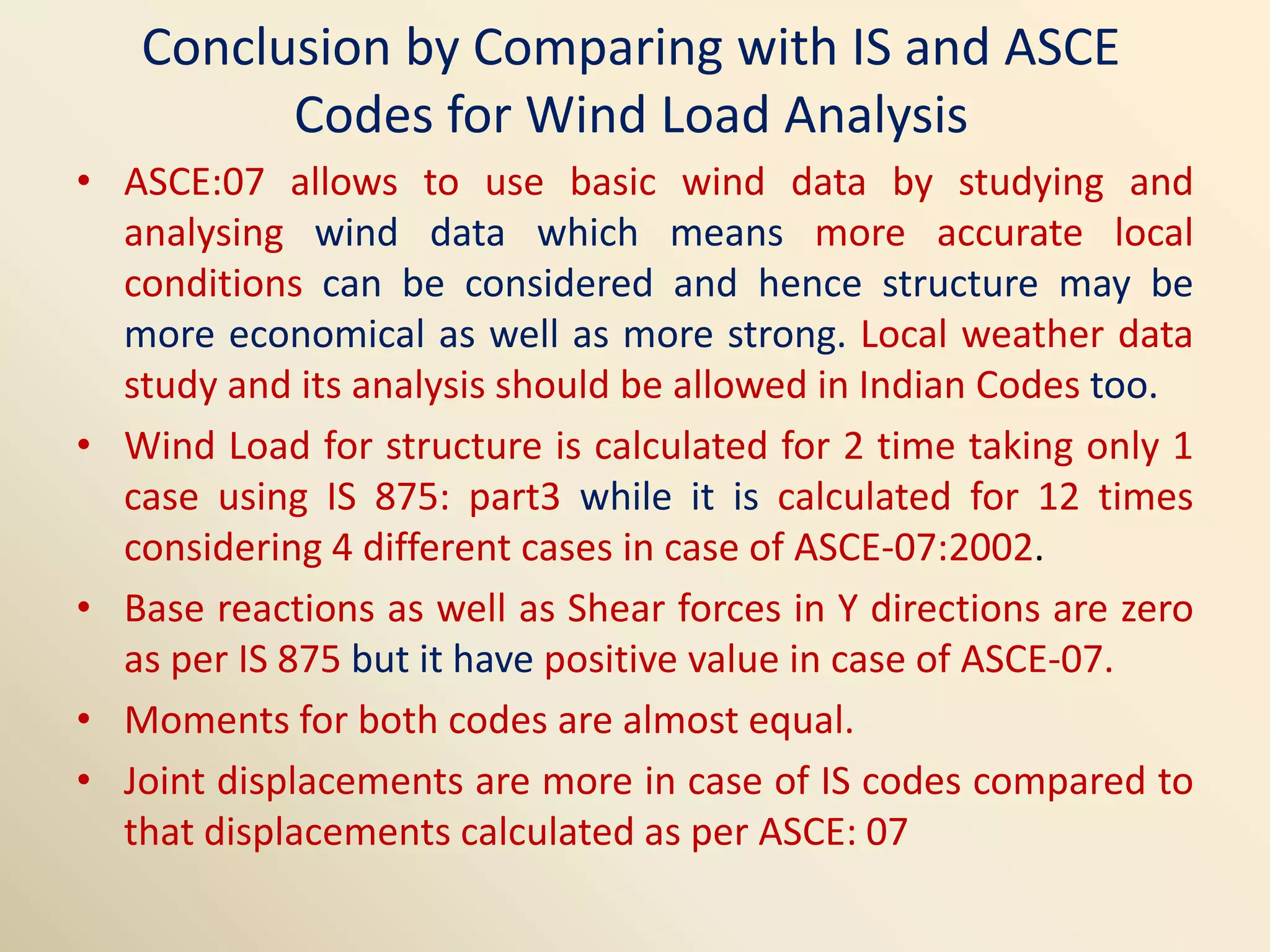The document discusses wind load analysis on buildings and structures according to Indian and American codes. It provides objectives of analyzing wind loads and calculating design wind speed, pressure, and forces on structures. Key steps include obtaining basic wind speed, calculating risk coefficients, terrain and structure size factors, and determining design wind pressure and forces on buildings. The document compares the Indian Standard Code IS 875 with the American Society of Civil Engineers code ASCE-7, noting some differences in factors and equations used between the two codes.

